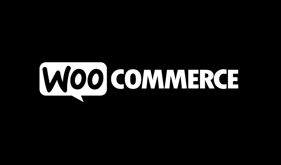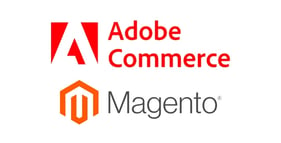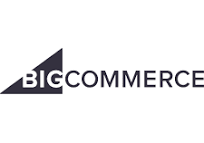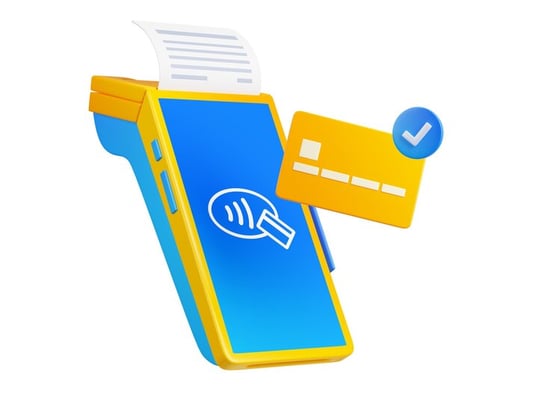Creating Your Ideal Online Business Store: Building the Perfect Online Store for Your Business
In today's digital age, having a strong online presence is essential for businesses looking to thrive in a competitive market. One of the most effective ways to establish your brand online is by building a successful online store. In this article, we'll explore the steps to creating the perfect online store that will help you build your online empire and take your business to new heights.
WEB HOSTINGECOMMERCEBIZ GUIDE
Creating Your Ideal Online Business Store: Building the Perfect Online Store for Your Business


The digital realm is a realm of endless possibilities, where even the smallest of ventures can make a significant impact.
Did you know that online retail sales reached a staggering $4.2 trillion in 2020? With the increasing popularity of ecommerce, having an online store has become a game-changer for businesses. Whether you're a small local business or a global brand, building an online store can open up endless opportunities for growth and success.
In this article, we will explore the essential steps to creating your ideal online business store. From understanding the basics of ecommerce to selecting the right platform, designing an attractive store, and optimizing for search engines, we will cover everything you need to know to build a successful online presence. Let's dive in!


In today's hyper-connected world, a strong online presence is not merely an option but a necessity for businesses looking to thrive.
"Just as a spider weaves its web to catch prey, businesses must craft an online presence to attract and engage their target audience"
The success of your online store depends on factors such as product selection, pricing strategies, shipping options, and customer support. Understanding these basics will help you build an ecommerce store that meets the needs of your target audience and drives sales.
Choosing the Right Platform for Your Store
When it comes to building your online store, selecting the right platform is a crucial decision. A suitable platform can provide you with the necessary tools and features to create a successful online store, while an ill-fitting one can limit your growth and hinder your ecommerce store's potential. There are several popular options available to build your store, each with its strengths and weaknesses. We've analyzed and compared some of the leading platforms to help you make an informed decision.
Shopify
Known for its user-friendly interface and comprehensive features, Shopify is a widely-used and trusted option for web stores. It offers an intuitive drag-and-drop builder, customizable templates, and a range of built-in marketing and SEO tools. Whether you're starting small or scaling your business, Shopify provides scalability, security, and excellent customer support. They also offer popular sales models like dropshipping.
WooCommerce
If you're already using WordPress, WooCommerce seamlessly integrates with the content management system, converting your existing website into a business store. It offers endless customization options, flexibility, and an extensive library of plugins and themes. WooCommerce empowers you to personalize your ecommerce store and tailor it to your unique requirements.
wix
This is a drag-and-drop website builder with customizable templates, web hosting, and domain name registration. You can create a fully functioning website without needing to pay a thing. After you've created your site, you can decide if you want to upgrade to make use of their premium features.
Adobe Commerce (formerly Magento)
It is a fully featured, subscription-based ecommerce solution from Adobe. It comes with advanced features out of the box, but it is also fully customizable and easily integrates with third-party extensions, a non-hosted ecommerce platform made for developers. It offers flexibility for brands that want a bespoke website setup but users likely will need an in-house developer to maintain their site and get the most from the platform.








Bigcommerce
This is a powerful ecommerce platform used by enterprise-level companies. Like Shopify and Wix, it offers web hosting and customization options for ecommerce stores, as well as tools for international selling, SEO, and listing products on marketplaces. It is a highly rated e-commerce platform which enables beautiful store experiences, fast check out, powerful analytics, and customisation through flexible APIs and third-party apps.


Identifying Your Target Audience
Understanding your target audience is crucial for creating a successful online store. By identifying who your potential customers are, you can tailor your store to their specific needs and preferences. This deeper understanding enables you to curate a shopping experience that resonates, leading to increased engagement and ultimately higher conversions.
So, how do you go about identifying your target audience? Let's break it down into a few key steps:
Step 1: Market Research
Start by conducting thorough market research to gain insights into your industry, competitors, and potential customers. Look for trends, demographics, and psychographics that align with your product or service. This research will help you paint a vivid picture of who your audience is and what they're looking for in an online store.
Step 2: Customer Surveys
Engage directly with your existing customers and conduct surveys to gather valuable feedback. Ask questions about their preferences, interests, and shopping habits. This data will provide you with firsthand insights into your target audience's needs and expectations.
Step 3: Website Analytics
Utilize website analytics tools to track visitor behavior on your online store. Analyze metrics such as traffic sources, bounce rates, and conversion rates. This data will help you understand which marketing channels are driving the most qualified traffic and which pages are resonating with your target audience.
Step 4: Social Media Listening
Monitor conversations happening on social media platforms related to your industry, products, and competitors. Pay attention to the language, interests, and pain points your target audience expresses. This insight will guide you in creating content and messaging that resonates with your audience.
By combining the insights gained from market research, customer surveys, website analytics, and social media listening, you can develop a comprehensive understanding of your target audience. This knowledge will empower you to make informed decisions when it comes to designing your online store, selecting products, and crafting your marketing strategy.
Remember, a successful online store is built on a deep understanding of your target audience. Take the time to truly get to know your customers, and you'll be well on your way to creating a store that attracts and delights them.
Designing an Attractive and User-Friendly Store
When it comes to creating an online store, the design is everything. A visually appealing and user-friendly store can make all the difference in attracting and retaining customers. Here are some tips and best practices to help you design an effective online store that stands out from the competition.
1. Clear and Intuitive Navigation: Make it easy for your customers to find what they're looking for by organizing your products into logical categories and providing a search bar. Avoid clutter and keep your navigation menu simple and intuitive.
2. Engaging Visuals: Use high-quality images and videos to showcase your products. Invest in professional photography and make sure your visuals accurately represent the products. Incorporate eye-catching graphics and banners to create a visually engaging store.
3. Consistent Branding: Your online store should reflect your brand identity. Use consistent colors, fonts, and imagery throughout your store to create a cohesive and professional look. This helps build brand recognition and trust with your customers.
4. Responsive Design: With more and more people shopping on their mobile devices, it's crucial to have a responsive design that looks great and functions seamlessly across different screen sizes. Optimize your store for mobile users to provide a smooth browsing experience.
5. Easy Checkout Process: Simplify the checkout process by minimizing the number of steps required to complete a purchase. Offer multiple payment options and clearly indicate any additional charges, such as shipping fees or taxes.
"A visually appealing and user-friendly store design can leave a lasting impression on your customers and increase the chances of them returning for future purchases."
6. Test and Optimize: Continuously test different design elements, such as button placements, color schemes, and call-to-action buttons to improve your store's performance. Use analytics tools to track user behavior and make data-driven decisions for optimal results.
7. Trust Signals: Display trust badges, customer reviews, and testimonials to instill confidence in your customers. Clearly state your refund and return policies to build trust and reduce purchase anxiety.
8. SEO-friendly Design: Optimize your store's design for search engines by using descriptive page titles, meta descriptions, and alt tags for images. Implementing SEO best practices can help improve your store's visibility on search engine result pages.
By designing an attractive and user-friendly online store, you can create a memorable shopping experience for your customers and increase your chances of success in the competitive ecommerce market.
Optimizing Product Listings for Search Engines
When it comes to running a successful online store, optimizing your product listings for search engines is key. By ensuring that your store ranks well in search engine results, you can increase visibility, attract more organic traffic, and ultimately boost conversions. In this section, we will explore effective strategies to improve your store's search engine optimization (SEO) efforts and maximize your online store's success.
1. Conduct Keyword Research
An integral part of optimizing your product listings is conducting thorough keyword research. By identifying the keywords that your target audience is using to search for products, you can strategically incorporate them into your product titles, descriptions, and tags. Use keyword research tools like Google Keyword Planner and SEMrush to discover high-performance keywords that are relevant to your products and align with your target audience's search intent.
2. Craft Compelling Product Descriptions
When creating product descriptions, focus on compelling and unique content that not only provides all the necessary details about the product but also convinces potential customers to make a purchase. Incorporate relevant keywords naturally into your descriptions, highlighting key features and benefits. Remember to write for your audience and keep the descriptions concise, engaging, and easy to read.
3. Optimize Product Images
In addition to well-written descriptions, optimizing your product images is crucial for attracting the attention of both search engines and potential customers. Ensure your images are high quality, properly sized, and labeled with descriptive filenames. Use alt tags to provide alternative text descriptions for your images, including relevant keywords where appropriate.
4. Utilize Structured Data Markup
Structured data markup, such as schema.org tags, can enhance your product listings in search engine results. This additional data provides search engines with a deeper understanding of your products, enabling them to display rich snippets like product ratings, prices, and availability. Implement structured data markup on your product pages to improve your store's visibility and click-through rates.
5. Optimize URL Structures
Creating clear and keyword-rich URLs for your product pages can have a positive impact on search engine rankings. Include relevant keywords in your URLs, keeping them concise and descriptive. Avoid long strings of numbers or irrelevant characters that can confuse search engines and users.
6. Monitor Performance and Make Data-Driven Improvements
Regularly monitor the performance of your product listings using tools like Google Analytics and Search Console. Analyze metrics such as organic search traffic, conversion rates, and bounce rates to identify areas for improvement. Make data-driven decisions to optimize your product listings further, which could include adjusting keywords, updating descriptions, or improving image quality.
By implementing these strategies, you can optimize your product listings for search engines and improve your online store's visibility, attract more organic traffic, and increase conversions. Take the time to continuously monitor and refine your SEO efforts to stay ahead of the competition and drive the success of your online store.
Benefits of Optimizing Product Listings for Search Engines
Increased visibility in search engine results
Attract more organic traffic to your online store
Improved rankings and higher search engine placements
Enhanced click-through rates with rich snippets
Higher conversion rates and increased sales
Implementing Secure Payment Gateways
In the world of online shopping, ensuring secure payment processing is a top priority when building your online store. Not only does this protect your customers' personal and financial information, but it also helps build trust, which is essential for the success of your ecommerce store. In this section, we will guide you through the process of implementing secure payment gateways on your online store.
What are payment gateways?
Payment gateways are online services that allow your customers to make secure and convenient payments on your ecommerce store. These gateways act as the intermediary between your store and the customer's bank, ensuring that sensitive information is encrypted and securely transferred.
Selecting the right payment gateway
When choosing a payment gateway for your online store, it's important to consider factors such as security, compatibility with your ecommerce platform, transaction fees, and customer support. Popular payment gateways include PayPal, Stripe, and Square, all of which offer different features and benefits to suit various business needs.
Integrating the payment gateway with your store
Once you've selected the payment gateway that suits your requirements, integration with your online store is the next step. This process involves linking your store's shopping cart and checkout page to the payment gateway, ensuring a seamless payment experience for your customers. Most ecommerce platforms provide easy-to-follow instructions or plugins to facilitate this integration.
Ensuring secure transactions
To protect your customers' sensitive information, it's essential to implement robust security measures for each transaction. This includes utilizing SSL certificates for encrypted communication, adopting tokenization for storing customer payment details securely, and implementing two-factor authentication for added security.
Monitoring and optimizing payment processes
Regularly monitoring your payment processes is crucial to identify and resolve any potential issues promptly. Analyze transaction data, payment success rates, and customer feedback to ensure a smooth and hassle-free payment experience for your customers.
Benefits of implementing secure payment gateways
1. Customer trust: A secure payment process builds trust with your customers, assuring them that their personal and financial information is protected.
2. Improved customer experience: A seamless and secure payment process enhances the overall customer experience, leading to higher customer satisfaction and increased sales.
3. Business credibility: Implementing secure payment gateways adds credibility to your online store, making it an attractive choice for customers and differentiating you from competitors.
Remember:
A secure payment gateway not only safeguards your customers' information but also instills confidence in them, encouraging repeat purchases and driving customer loyalty.
Streamlining the Checkout Process
Ensuring a seamless and hassle-free checkout process is crucial for improving the conversion rates of your online store. By streamlining the checkout process, you can reduce cart abandonment and make it easier for customers to complete their purchase. Here are some tips to optimize your checkout process:
Evaluate and Simplify Form Fields
Review the form fields in your checkout process and eliminate any unnecessary or redundant information. Only ask for essential details such as shipping address, payment information, and contact details. Minimizing the number of form fields can speed up the checkout process and prevent customer frustration.
Implement Guest Checkout
Not all customers want to create an account when making a purchase. Provide the option for guest checkout, allowing customers to complete their order without requiring account creation. This can significantly reduce friction and encourage more users to complete their purchase.
Offer Multiple Payment Options
Expand the payment options available to customers beyond credit cards. Consider integrating popular digital wallets such as PayPal, Stripe, Apple Pay, or Google Pay, Square. Offering a variety of payment methods can cater to different customer preferences and improve the overall checkout experience.
Provide Clear Progress Indicators
Ensure your checkout process includes clear progress indicators so that customers are aware of how many steps are left to complete their purchase. This helps manage expectations and keeps customers engaged throughout the process.
Optimize for Mobile Devices
With the increasing use of mobile devices for online shopping, it is essential to have a mobile-responsive and user-friendly checkout experience. Test your checkout process on different devices and ensure it is optimized for mobile users, with large buttons, easy-to-read text, and simplified navigation.
Benefits of Streamlined Checkout
Reduced cart abandonment rates
Faster checkout process
Improved customer satisfaction
Increased conversion rates
Encourages repeat purchases
By following these tips and optimizing your checkout process, you can enhance the overall user experience and boost the success of your online store. Remember, a seamless and efficient checkout process can lead to more satisfied customers and increased sales.
Creating Compelling Product Descriptions and Images
When it comes to running an online store, capturing the attention of potential customers is crucial. One of the most effective ways to do this is by creating compelling product descriptions and optimizing your product images.
Writing Engaging Product Descriptions
An engaging product description is like a salesperson who can communicate the unique features and benefits of your products to your customers. To create compelling product descriptions:
Highlight the key features: Clearly communicate the unique aspects of your product that sets it apart from the competition. Utilize bullet points to make it easy for customers to quickly scan through the information.
Tell a story: Paint a vivid picture in the customer's mind by sharing how your product can enhance their life. Use descriptive language and evoke emotions to connect with your audience.
Address customer pain points: Identify the problems or challenges your target audience faces and explain how your product can solve those issues and make them see reasons why they need your product. Remember, your goal is to convince your customers that your product is worth buying. Be persuasive, but also authentic and honest in your descriptions.
Optimizing Product Images
In addition to compelling descriptions, high-quality product images are essential for showcasing your products and catching the eye of your customers. Follow these tips to optimize your product images:
Use high-resolution images: Ensure that your product images are clear, detailed, and of high resolution. This will allow customers to examine your products closely and gain confidence in their quality.
Show different angles: Provide customers with a comprehensive view of your products by including images that showcase different angles, close-ups, and details. This will give them a better understanding of what they can expect.
Optimize image file size: Large image files can slow down your website's loading speed, affecting the user experience. Compress your images without compromising quality to improve website performance.
By combining enticing product descriptions with visually appealing and informative images, you can create an immersive shopping experience for your customers. Remember to regularly review and update your product descriptions and images to keep them fresh and relevant.




Implementing Customer Feedback and Reviews
Leveraging customer feedback and reviews is an important aspect of running a successful online store. By incorporating customer opinions and experiences into your business strategy, you can enhance the credibility of your ecommerce store and build trust with potential customers. Online stores that actively seek and implement customer feedback demonstrate a commitment to continuously improving their products and services. This not only attracts new customers but also encourages loyal customers to become brand advocates and share their positive experiences with others.
Why Customer Feedback and Reviews Matter
Customer feedback and reviews offer valuable insights into the strengths and weaknesses of your online store. They provide first-hand accounts of customers' experiences, helping you understand what aspects of your business are resonating with your target audience and which areas may need improvement.
When potential customers visit your ecommerce store, they often seek social proof and reassurance that your products or services are of high quality. Positive customer reviews and ratings can influence their purchasing decisions, increasing your conversion rates and driving sales.
Techniques for Effective Implementation
To effectively implement customer feedback and reviews on your online store, consider the following techniques:
Encourage customers to leave reviews: Utilize email campaigns or in-store prompts to encourage customers to share their feedback and experiences. Offer incentives such as discounts or rewards for leaving reviews.
Monitor review platforms: Regularly check popular review platforms, such as Google Reviews or Yelp, for customer feedback. Respond promptly to both positive and negative reviews to show that you value customer opinions.
Showcase customer testimonials: Highlight positive customer testimonials on your website, social media platforms, and product pages. Use quotes or embedded widgets to display customer reviews prominently.
Utilize feedback for product improvement: Analyze customer feedback to identify areas for improvement in your products or services. Use this valuable information to make necessary adjustments and enhancement
Building Trust Through Transparency
Transparency is key when it comes to implementing customer feedback and reviews. Displaying both positive and negative reviews demonstrates authenticity and builds trust with your audience. It shows that you value honest feedback and are committed to addressing any concerns or issues raised by customers.
For example, we can add tags like; At our ecommerce store, we believe in the power of customer feedback. By implementing reviews and actively incorporating customer opinions into our decision-making process, we have been able to continually improve our products and services. We appreciate the trust our customers place in us, and their feedback remains an integral part of our business growth.
Utilizing Social Media for Store Promotion
Social media platforms offer tremendous opportunities for promoting your online store and connecting with potential customers. By harnessing the power of social media, you can enhance your brand visibility, drive traffic to your online store, and ultimately boost sales.
1. Choose the Right Social Media Platforms
Not all social media platforms are created equal, and it's important to identify the ones that align with your target audience and business goals. Do your research to determine which platforms your customers are most active on and focus your efforts there. Whether it's Facebook, Instagram, Twitter, or LinkedIn, understanding your audience's preferences will allow you to tailor your content and engage with them effectively.
2. Create Consistent and Engaging Content
Consistency is key when it comes to social media. Develop a content strategy that aligns with your brand's identity and values, and create a content calendar to stay organized. Share a variety of content, including product updates, behind-the-scenes glimpses, customer testimonials, and industry news. Don't forget to incorporate visually appealing images and videos to capture your audience's attention.
3. Engage with Your Audience
Social media is all about building relationships. Respond to comments, messages, and mentions promptly. Show your appreciation for customer feedback and address any concerns or inquiries in a timely and professional manner. This level of engagement will not only foster customer loyalty but also demonstrate your commitment to excellent customer service.
4. Leverage Influencer Marketing
Influencers can have a significant impact on promoting your online store. Collaborate with influencers in your industry or niche who have a substantial following and engage with your target audience. Their endorsements and recommendations can generate buzz around your products and drive traffic to your store. Be sure to select influencers whose values align with your brand to ensure authenticity.
5. Run Social Media Advertising Campaigns
Social media advertising enables you to reach a wider audience and target specific demographics. Whether it's running paid ads on Facebook or Instagram or promoting your products through sponsored posts, advertising campaigns can effectively increase brand exposure and drive traffic to your ecommerce store. Experiment with different ad formats and targeting options to optimize your campaign performance.
"Social media allows us to engage with our customers on a more personal level and create a sense of community around our brand. It's an invaluable tool for driving store traffic and building brand loyalty."
- Sarah Johnson, CEO of XYZ Clothing Co.
Monitoring and Analyzing Store Performance
Tracking and analyzing the performance of your online store is essential for making informed business decisions. It allows us to measure the effectiveness of our strategies, identify areas for improvement, and maximize our success in the competitive ecommerce landscape. By monitoring key metrics, we gain valuable insights into how well our store is performing and how it can be optimized to drive growth.
Why is Store Performance Monitoring Important?
Monitoring allows us to understand how our online store is performing in real-time. It provides us with data-driven insights that help us identify trends, customer behavior patterns, and potential opportunities for growth. By regularly tracking store performance, we can spot any issues or bottlenecks and take proactive steps to address them.
Through performance monitoring, we can track various key metrics, including:
Website traffic and visitor demographics
Conversion rates
Revenue and sales figures
Average order value
Shopping cart abandonment rate
Customer retention and repeat purchases
How to Effectively Monitor and Analyze Store Performance
To effectively monitor and analyze store performance, we need to implement the right tools and practices. Here are some steps to get started:
Set clear goals: Define what success looks like for your online store. Identify key metrics that align with your business objectives.
Implement analytics software: Use robust analytics tools such as Google Analytics to track and measure your store's performance metrics.
Regularly review performance: Set aside dedicated time to review and analyze your store's performance data. Look for patterns, trends, and areas of improvement.
Identify strengths and weaknesses: Identify which areas of your store are performing well and which ones need improvement. Focus on enhancing weak areas to drive overall performance.
Experiment and test: Implement A/B testing and other experiments to optimize different elements of your store, such as product pages, checkout process, or marketing campaigns.
Stay updated: Keep up with industry trends, new tools, and best practices for store performance monitoring. Continuously refine your strategies to stay ahead of the competition.
''Effective monitoring of store performance enables us to make data-backed decisions and optimize our store to ensure it aligns with our business goals."
Implementing Ongoing Store Optimization
Attracting customers to your online store is just the beginning. To stay ahead of the competition and maximize your success, ongoing store optimization is critical. It involves continuously refining and improving your online store based on customer feedback, industry trends, and performance metrics. Our team is here to guide you through the strategies and techniques that will keep your online store at its highest potential.
1. Regularly Review Your Analytics
Analyzing key metrics is vital for understanding how your online store is performing. Keep a close eye on visitor traffic, conversion rates, and customer behavior. This will help you identify areas for improvement and make data-driven decisions to optimize your store's performance.
2. Test and Optimize your Website Speed
Website speed plays a crucial role in customer satisfaction and search engine rankings. Conduct regular speed tests to ensure your online store loads quickly across all devices. Optimize your images, enable browser caching, and leverage content delivery networks (CDNs) to enhance your website's speed and boost user experience.
3. Implement A/B Testing
A/B testing allows you to experiment with different variations of your website to identify the most effective changes for increasing conversions. Test different layouts, headlines, call-to-action buttons, and other elements to see what resonates best with your audience. Make data-backed decisions on what changes to implement on your online store.
4. Optimize Product Descriptions and Metadata
Continuously refine your product descriptions to make them more engaging, informative, and optimized for search engines. Use relevant keywords, highlight unique selling points, and ensure clarity in your descriptions. Update product metadata, including title tags and meta descriptions, to enhance your store's visibility and improve click-through rates in search engine results.
5. Enhance Mobile Experience
The majority of online shoppers browse and purchase products using their mobile devices. Therefore, it's essential to optimize your online store for mobile users. Ensure your website is fully responsive, with easy navigation, fast loading speed, and seamless checkout functionality on mobile devices.
Conclusion
Congratulations on reaching the end of our comprehensive guide to building your ideal online store! We've covered a lot of ground, from understanding the basics of ecommerce to optimizing your product listings and implementing secure payment gateways.
An online store is not just a digital front for your business, but a powerful tool to connect with your target audience and drive sales. By implementing the strategies and best practices outlined in this article, you can create an ecommerce store that not only attracts customers but also keeps them coming back.
Remember, building and maintaining a successful online store is an ongoing process. Continually monitor and analyze your store's performance, make necessary optimizations, and leverage social media for promotion. By staying ahead of the game and adapting to the changing landscape of ecommerce, your online store will thrive.
So, what are you waiting for? Start building your dream online store today and take your business to new heights in the digital world!










Frequently Asked Questions
How can I build an online store for my business?
Building an online store for your business is easier than ever. There are various platforms and website builders available that can help you create your ideal online store. These platforms typically provide templates, customization options, and integrations with payment gateways and shipping providers to make the process seamless and efficient.
What is the difference between an ecommerce store and an online store?
An ecommerce store and an online store essentially refer to the same thing. Both terms represent a digital platform where products or services are sold over the internet. Whether you refer to it as an ecommerce store or an online store, the primary goal remains the same: to provide customers with the ability to purchase your products or services online.
How do I identify my target audience for my online store?
Identifying your target audience is a crucial step in building a successful online store. Start by analyzing your existing customer base and their demographics, interests, and purchasing behavior. Conduct market research to understand the needs and preferences of potential customers. This information will guide you in tailoring your online store to meet the specific needs of your target audience.
Which platform should I choose for my online store?
Choosing the right platform for your online store depends on your specific needs and budget. Some popular ecommerce platforms include Shopify, WooCommerce, Magento, and BigCommerce. Research each platform's features, pricing, and customer reviews to determine which one aligns best with your business requirements.
How important is the design of my online store?
The design of your online store plays a significant role in attracting and retaining customers. An attractive and user-friendly design enhances the shopping experience and makes it easier for customers to navigate and find what they're looking for. Make sure your online store reflects your brand identity and showcases your products in an appealing way.
How can I optimize my product listings for search engines?
Optimizing your product listings for search engines is crucial for improving your online store's visibility and attracting more organic traffic. Use relevant keywords in your product titles, descriptions, and meta tags. Write unique and compelling product descriptions, and optimize your product images with relevant alt tags. Regularly update your content and consider implementing structured data markup to enhance search engine visibility.
How can I ensure secure payment processing on my online store?
Implementing secure payment gateways is essential to build trust with your customers. Choose reputable payment processors that offer encryption and fraud detection features. Display security badges or trust seals on your online store to reassure customers that their payment information is safe. Regularly update your website's security measures to protect against potential threats.
How can I streamline the checkout process on my online store?
Ensure a smooth and hassle-free checkout process to minimize cart abandonment and improve conversion rates. Simplify the steps required for customers to complete their purchase, remove unnecessary fields or distractions, and offer guest checkout options. Display a progress indicator and provide clear instructions and visual cues to guide customers through the checkout process.
How can I create compelling product descriptions and images for my online store?
Engaging product descriptions and high-quality images are key to attracting customers and driving sales. Write detailed and persuasive product descriptions that highlight the benefits and unique features of your products. Use high-resolution images that accurately represent your products from different angles. Consider including customer reviews and testimonials to enhance credibility.
How can I effectively leverage customer feedback and reviews on my online store?
Customer feedback and reviews are valuable tools for building trust and credibility. Implement a customer review system on your online store, encourage customers to leave reviews, and respond promptly to feedback. Display customer reviews prominently on your product pages and consider featuring positive reviews to showcase the satisfaction of previous customers.
How can I use social media to promote my online store?
Social media platforms offer a cost-effective way to promote your online store and reach a wider audience. Create engaging content that showcases your products or services and encourages interaction from your followers. Run targeted advertising campaigns on social media platforms to reach potential customers. Collaborate with influencers or relevant brands to amplify your store visibility.
What key metrics should I monitor to track my online store's performance?
Monitoring key metrics will help you understand how your online store is performing and identify areas for improvement. Some important metrics to track include website traffic, conversion rates, average order value, customer acquisition cost, and customer lifetime value. Use web analytics tools like Google Analytics or the built-in analytics offered by your ecommerce platform to gather and analyze this data.
How can I optimize my online store on an ongoing basis?
Continually optimizing your online store is crucial for staying competitive. Regularly review and update your product offerings, pricing strategies, and website design based on customer feedback and market trends. Test different marketing strategies and promotional offers to identify what resonates best with your target audience. Monitor and analyze the performance of your store regularly to identify areas for improvement.
